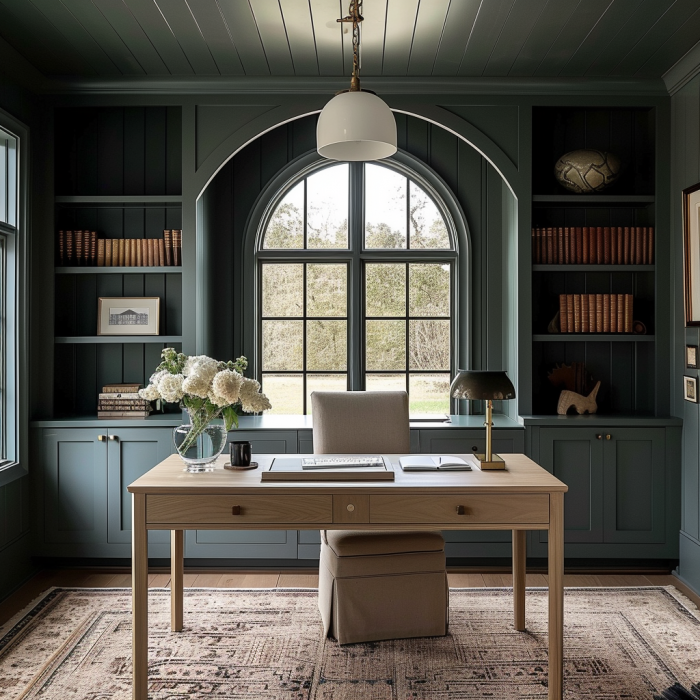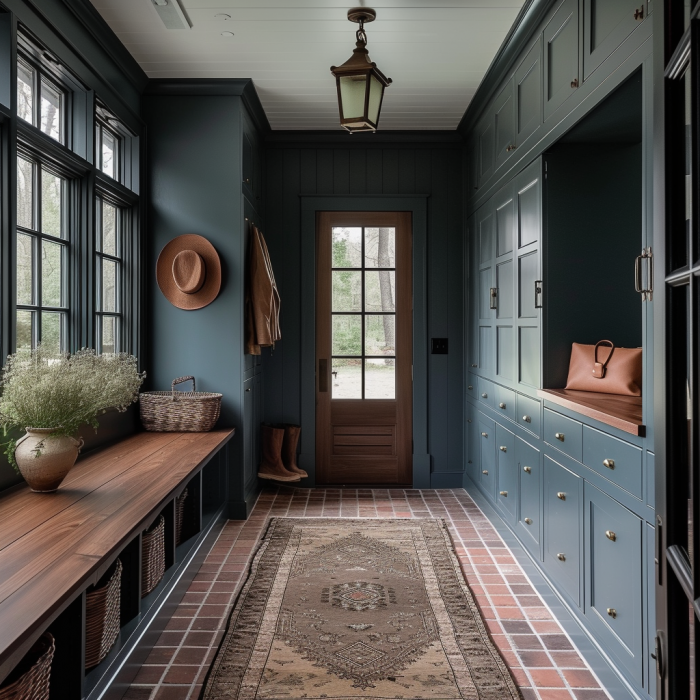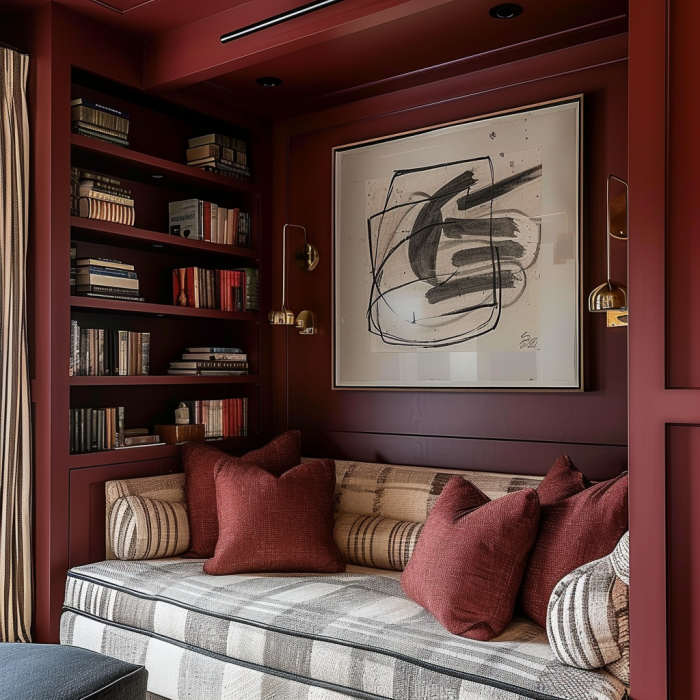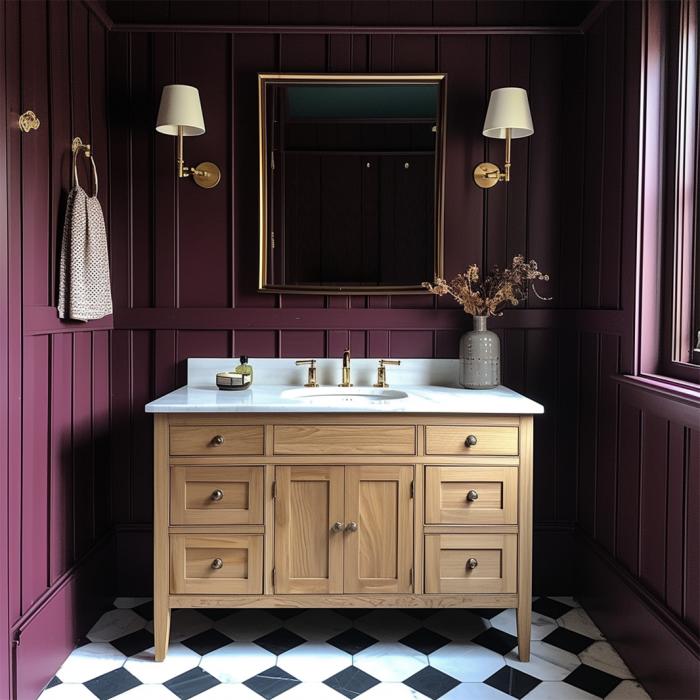We’re pleased to report that bold, personality-packed design is back. From colorful upholstery and patterned accents to traditional furniture and moody, wall-to-wall paint, it appears that cool, understated minimalism is officially fading out of style.
On the topic of paint, a crisp white is no longer the default. Designers and DIYers alike are embracing moody hues like evergreen, rich brown, deep blue, and beyond in nearly every room in the home. Even paint application is leaning more dramatic. Color drenching — wherein you paint the walls, ceiling, trim, and doors the same hue — is becoming more and more mainstream when using bold hues.
Of course, this bold move leaves room for error, too. Ahead, Havenly designers share the eight bold paint color mistakes they’re noticing, from color selection to application.
1. Not sampling

We highly advise against choosing a bold paint color based solely on a paper sample. You really need to test the real thing on your walls to gauge whether or not it’s a good fit — both in terms of color and atmosphere. We recommend trialing your prospective hues in a few different areas and evaluating at different throughout the day to see how each shade changes with the light. It’s a bold investment, so take the time to choose something you’ll love for the long haul.
2. Choosing a “trend” color

It’s no secret that we love a color trend. But don’t go with a “hot” color you’re lukewarm on over something you really love just because it’s all over Instagram. If you’re going to go bold, make sure you’ll love it for the long haul, not just because your favorite home blogger used it. If you hate the color green, for example, don’t paint your entire living room hunter, even if it is on-trend.
3. Not considering the whole home color palette

We absolutely love a bold paint choice, but it’s essential to work with a hue that complements your existing home color scheme. For example, if you’re embracing a deep and dark navy paint, then carry that color throughout your home in other ways. The last thing you want is for one room to stick out like a sore thumb and not blend with the rest of your space — paint should feel complementary and natural, not like an afterthought.
4. Not considering color psychology

To that end, it’s equally important to consider paint as it relates to overall mood and atmosphere — especially when you’re going bold. For example, red is associated with vigor, energy, and power, and can make you feel stimulated, while blue is calming, serene, and relaxing. Find our brief rundown below:
- Red: Associated with power, sensuality, and vigor, red can raise energy levels and make you feel stimulated. Use it in rooms you’re not in all the time and those not designed for relaxation, like a powder room, dining room, or sitting room.
- Yellow: This color is cheery, happy, and optimistic. But too bright of a yellow can feel agitating, while too dull denotes sickness. We love the perfect in-between shade in a kitchen, dining room, or bathroom.
- Blue: This hue promotes serenity, calm, and tranquility. It’s on the cool side of the spectrum, but is still reminiscent of nature. It’s a very popular color for obvious reasons — use it anywhere!
- Green: This color denotes freshness, new life, safety, and nature. This is another versatile, popular color that promotes tranquility — use it liberally!
- Purple: This is the color of passion, drama, luxury. It can veer from lively and lighthearted to rich and decadent, depending on the shade. We’d recommend saving it for a powder room, kids room, or dining room.
- Orange: This playful color breeds creativity, vitality, and energy. Use it in rooms meant to inspire creativity and introspection, like a home office or library.
5. Forgetting flooring

Do you have cool or warm wood flooring in your home? What color is your floor tile? Make sure that the paint color you choose complements your flooring — a mismatch can lack contrast and appear dull or feel too disparate. Similarly, consider the ceiling. Whether you’re going for an all-in saturated look or opting for a shade of white, always consider the undertones to make sure they complement each other.
6. Not creating a balanced scheme

Similarly, consider the full room design when selecting your paint color. You want to ensure that your furnishings and textiles complement and enhance your bold paint color rather than clash with it. From a more tonal scene that works with analogous colors on the color wheel, or a more dynamic one that weaves in complementary and contrasting hues, always consider how textures and materiality play into your color scheme.
7. Holding back

The accent wall had it’s time in the limelight in the 2010s, and now, it feels a bit dated. Instead of going with bold navy or evergreen on a single wall surrounded by high-contrast white, go all-in with a saturated color on all four walls (bonus points for the ceiling and trim!).
8. Sticking to walls only

Paint isn’t just for the walls — consider cabinetry, millwork, trim, doors, and ceilings when playing with bold paint in your home. In the above kitchen, for example, the bold cabinetry stands out and lends a moody, elevated, and rich touch to the space.
Want expert advice on your own space, straight from an interior designer? Get started today with our style quiz.

